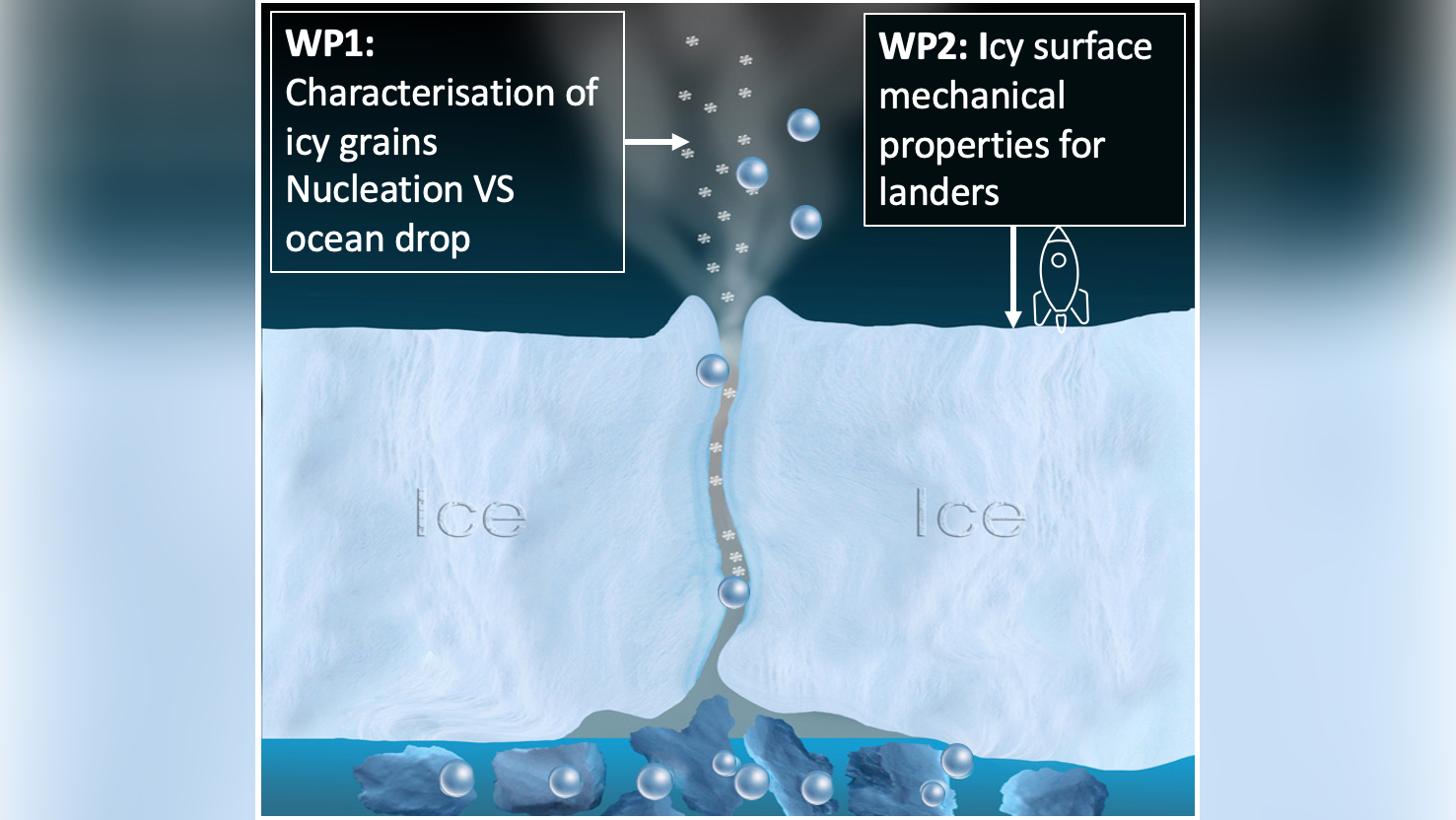Duration: 36 months
In our solar system, most extraterrestrial oceans lie beneath thick ice layers on moons orbiting Jupiter and Saturn. These subsurface oceans, warmed by tidal forces and isolated from sunlight, are prime candidates for hosting life. On Saturn’s moon Enceladus, ocean water escapes through geysers (plumes) via crevasses in the icy surface, reaching the exosphere. Cassini performed many flybys through the plumes and found that plumes are salty and contain complex organic molecules (Postberg et al. 2018), suggesting that crucial ingredients for life as we know it are present beneath the moon's icy crust. Studying Enceladus's plumes and surface can provide crucial insights into its habitability, the structure of its crevasses and the depth of its ocean. By observing these plumes, we can infer the composition of subsurface oceans, by recognising and characterising icy grains that are directly originating from the ocean, which is an important step until lander missions—for instance such as ESA's L4 Enceladus mission—can directly explore these environments. Icy moons are top priorities in the search for extraterrestrial life in the solar system, with Enceladus being a prime target for future landing mission. To support such missions, this project aims to replicate Enceladus’s environment in the laboratory to predict and constrain Enceladus’ surface characteristics and plume dynamics by using PISCES (Planetary Ices Simulation Chamber for Enceladus and MoonS), currently the first facility in the world to simulate the plumes of Enceladus. This project will benefit ESA missions to icy moons and related technology developments (including payloads), and refine our understanding of subsurface ocean composition and Enceladus’s habitability.

